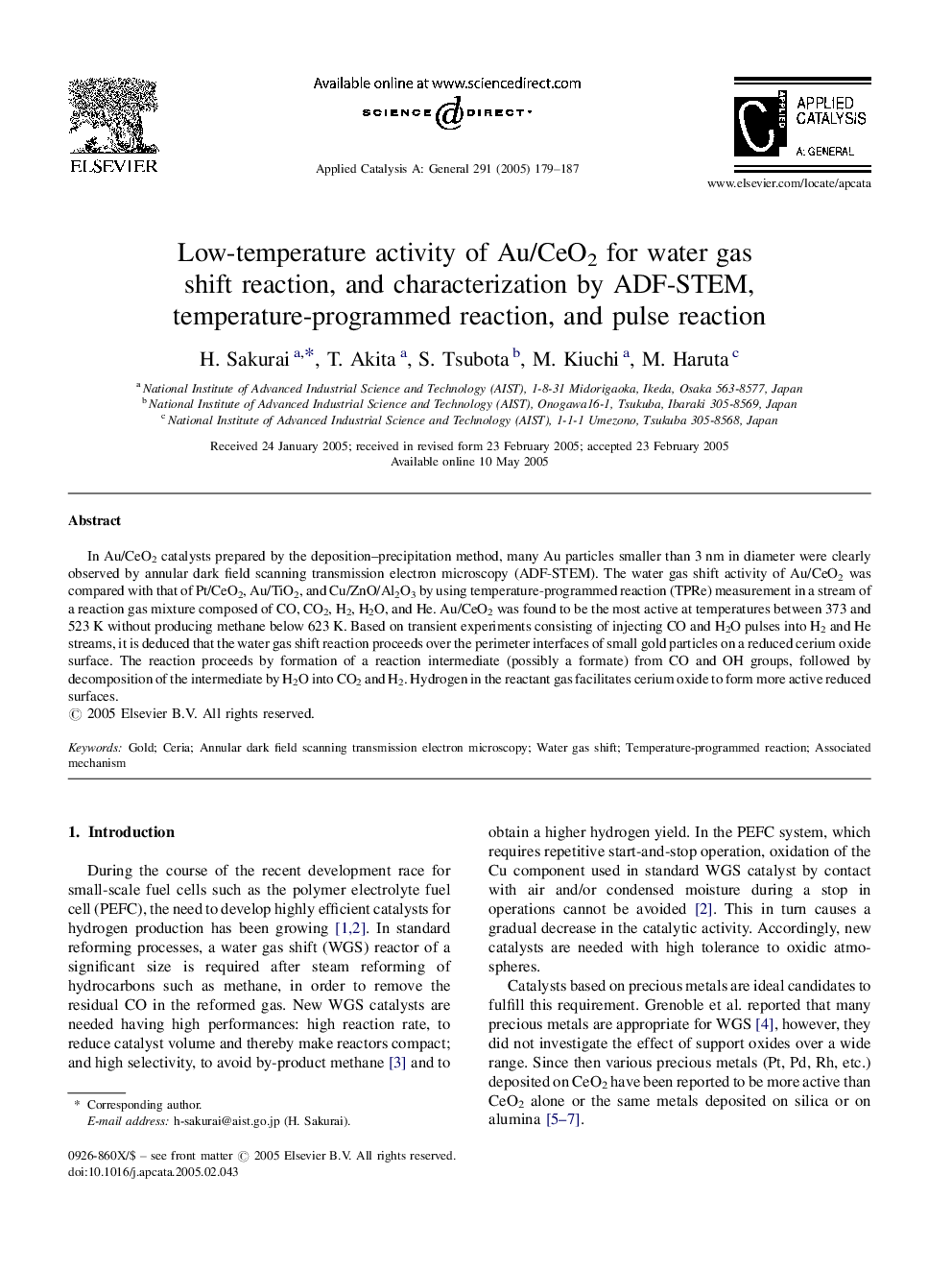| Article ID | Journal | Published Year | Pages | File Type |
|---|---|---|---|---|
| 9607867 | Applied Catalysis A: General | 2005 | 9 Pages |
Abstract
In Au/CeO2 catalysts prepared by the deposition-precipitation method, many Au particles smaller than 3Â nm in diameter were clearly observed by annular dark field scanning transmission electron microscopy (ADF-STEM). The water gas shift activity of Au/CeO2 was compared with that of Pt/CeO2, Au/TiO2, and Cu/ZnO/Al2O3 by using temperature-programmed reaction (TPRe) measurement in a stream of a reaction gas mixture composed of CO, CO2, H2, H2O, and He. Au/CeO2 was found to be the most active at temperatures between 373 and 523Â K without producing methane below 623Â K. Based on transient experiments consisting of injecting CO and H2O pulses into H2 and He streams, it is deduced that the water gas shift reaction proceeds over the perimeter interfaces of small gold particles on a reduced cerium oxide surface. The reaction proceeds by formation of a reaction intermediate (possibly a formate) from CO and OH groups, followed by decomposition of the intermediate by H2O into CO2 and H2. Hydrogen in the reactant gas facilitates cerium oxide to form more active reduced surfaces.
Related Topics
Physical Sciences and Engineering
Chemical Engineering
Catalysis
Authors
H. Sakurai, T. Akita, S. Tsubota, M. Kiuchi, M. Haruta,
